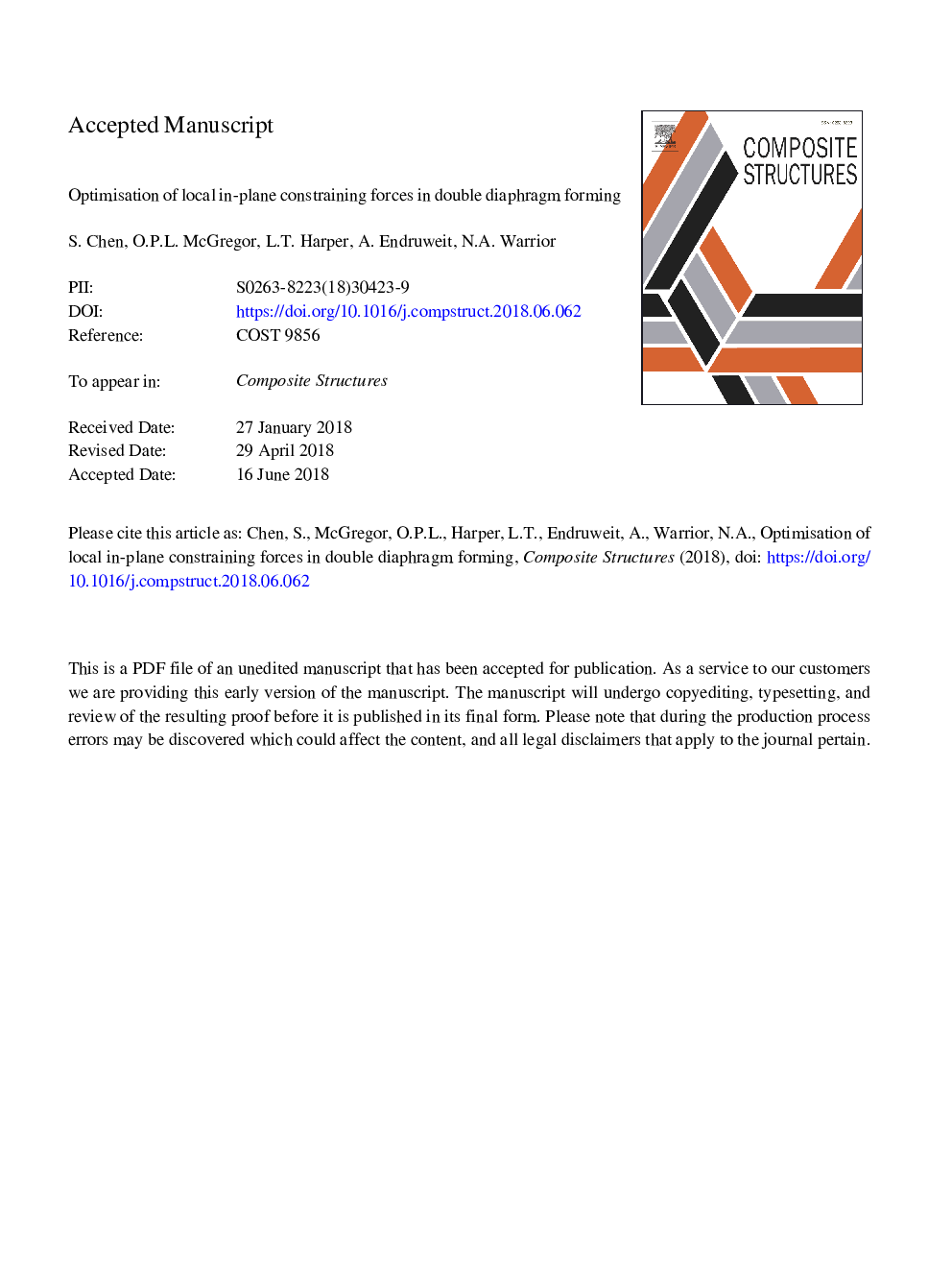| Article ID | Journal | Published Year | Pages | File Type |
|---|---|---|---|---|
| 6703244 | Composite Structures | 2018 | 35 Pages |
Abstract
Rigid blocks (risers) were introduced in the double diaphragm forming (DDF) process to change the local in-plane strain distribution in the diaphragms, aimed at reducing wrinkling defects in the production of fabric preforms. A two-step optimisation method was developed to determine the position and dimension of each riser. In Step I, optimisation of the riser position was conducted using a simplified finite element (FE) model coupled with a genetic algorithm (GA). The height of each riser was optimised in Step II using a detailed FE model with the optimised riser positions from Step I. For demonstration, a hemisphere preform was manufactured by DDF using the optimum riser arrangement established by the optimisation routine. Results indicate that the optimum riser pattern (shape and position relative to the component boundary) can dramatically improve the preform quality through reduction of out-of-plane wrinkles, validating the feasibility of the two-step routine.
Related Topics
Physical Sciences and Engineering
Engineering
Civil and Structural Engineering
Authors
S. Chen, O.P.L. McGregor, L.T. Harper, A. Endruweit, N.A. Warrior,
